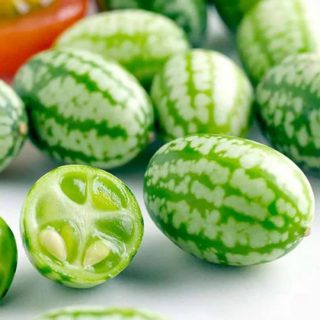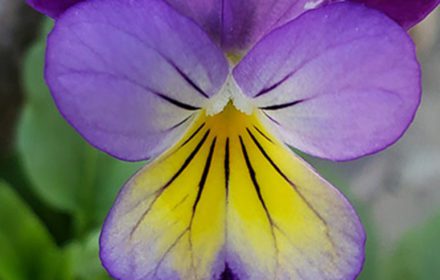How to Grow Yellow Honey Clover from Seeds
Yellow Honey Clover, also known as Melilotus officinalis, is a tall, attractive plant known for its bright yellow, honey-scented blooms. This hardy biennial or annual can reach heights of over 1.8 meters (6 feet), making it a stunning addition to any garden. It is tolerant of drought conditions and thrives in well-drained, loamy clay soils with a pH above 6.5. Though adaptable, Yellow Honey Clover does not do well in overly wet environments or regions with prolonged freezing temperatures. Blooming from summer until late autumn, it is popular for its sweet scent and long stems, making it a favourite for both pollinators and cut flower arrangements.
When and Where to Sow Yellow Honey Clover Seeds
- Outdoor Sowing: Yellow Honey Clover seeds can be sown directly outdoors from late spring to early summer (May to June), once all risk of frost has passed. Choose a sunny spot with well-drained soil for the best growth.
- Indoor Sowing: For an early start, sow seeds indoors in pots or seed trays 6-8 weeks before the last frost. This allows seedlings to establish in a controlled environment before transplanting outdoors.
Ideal Growing Conditions for Yellow Honey Clover
- Soil Requirements: Yellow Honey Clover thrives in loamy, clay-rich soil but can adapt to most well-drained soils. It prefers a pH of 6.5 or higher, making it ideal for alkaline soils. Ensure the soil is well-drained, as clover does not perform well in waterlogged conditions.
- Sunlight: Choose a location that receives full sunlight. Yellow Honey Clover requires at least 6-8 hours of direct sunlight per day for optimal flowering and growth.
- Temperature: Ideal germination temperatures range between 16-19°C (60-66°F). Yellow Honey Clover is hardy but sensitive to overly cold or frost-prone environments in its early growth stages.
How to Sow Yellow Honey Clover Seeds Indoors
- Sowing in Pots or Trays: Fill seed trays or small pots with a well-draining, loamy compost. Yellow Honey Clover seeds can be pressed gently into the surface of the compost, at a depth of 6 mm (1/4 inch). Firm the compost down lightly.
- Germination Conditions: Place the pots or trays in a bright, sunny location with a temperature between 16-19°C. Keep the soil consistently moist but avoid waterlogging. If needed, cover the trays with a clear plastic wrap to retain moisture.
- Germination Time: Germination can take up to 30 days, so patience is key. Once seedlings have reached a height of 5-7 cm (2-3 inches), they will be strong enough to handle.
- Transplanting: Once seedlings are established and the last frost has passed, transplant them into their final growing position in the garden. Be gentle when transplanting as the fine roots can be delicate.
How to Sow Yellow Honey Clover Seeds Outdoors
- Preparing the Soil: Prepare the seed bed by cultivating the soil to a fine tilth. If necessary, amend the soil with organic matter to improve drainage, especially if the soil is heavy or compacted.
- Sowing Depth and Spacing: Direct sow seeds into the ground at a depth of 6 mm (1/4 inch). Press the seeds gently into the soil, ensuring the area is well-drained. Space the seeds 30-45 cm (12-18 inches) apart to allow room for the tall stems to grow.
- Watering: Water the soil lightly after sowing, ensuring the soil stays moist during germination. Do not allow the soil to become waterlogged as this may hinder germination.
- Germination: Germination can take up to 30 days, depending on outdoor conditions. Be patient and ensure the soil remains consistently moist during this period.
Caring for Yellow Honey Clover Plants
- Watering: Yellow Honey Clover is drought-tolerant once established but will need regular watering during germination and early growth stages. Keep the soil moist but not waterlogged.
- Feeding: This plant is low-maintenance and does not require additional feeding if grown in fertile soil. If grown in poor soil, a light application of a balanced fertiliser at the start of the growing season can boost growth.
- Thinning: Thin out seedlings once they are established, ensuring that plants are spaced at least 30-45 cm (12-18 inches) apart to allow for air circulation and prevent overcrowding.
- Overwintering: In areas with mild winters, Yellow Honey Clover can act as a biennial. In colder climates, the plant may need to be protected from frost or grown as an annual. If self-seeding is desired, allow some flowers to set seed and fall naturally at the end of the growing season.
Using Yellow Honey Clover in the Garden
- Pollinator Gardens: Yellow Honey Clover’s honey-like scent and vibrant yellow blooms attract bees, butterflies, and other beneficial insects. It’s a great addition to pollinator-friendly gardens or meadows.
- Cut Flowers: The long stems and bright blooms make Yellow Honey Clover an excellent choice for cut flower arrangements. Harvest the flowers in the morning for the longest vase life.
- Ground Cover: With its ability to self-seed, this plant can be used as a ground cover in grasslands or large garden areas. Its deep roots also help improve soil structure and prevent erosion.
Common Issues and Tips for Growing Yellow Honey Clover
- Slow Germination: Germination may take longer in cooler temperatures or poorly drained soil. To speed up germination, ensure the seeds are sown in well-drained, loamy soil and kept consistently moist.
- Pests: Young seedlings may be susceptible to slugs and snails, especially in damp conditions. Protect plants with organic slug pellets or copper tape during the early growth stages.
- Self-Seeding: Yellow Honey Clover is a prolific self-seeder. If you want to control its spread, remove spent blooms before they set seed.
Common Questions About Growing Yellow Honey Clover
- Is Yellow Honey Clover drought-tolerant? Yes, once established, Yellow Honey Clover is drought-tolerant and can thrive in dry conditions. However, regular watering is essential during the germination and early growth stages.
- Can Yellow Honey Clover be grown in containers? While it is possible to grow Yellow Honey Clover in large containers, it is best suited for garden beds, grasslands, and meadows where it can spread naturally.
- How long does Yellow Honey Clover flower for? Yellow Honey Clover flowers from mid-summer until late autumn, providing a long season of beautiful, scented blooms that attract pollinators.
By following these steps, you can enjoy the tall, vibrant blooms of Yellow Honey Clover in your garden. Its adaptability, sweet scent, and pollinator-friendly nature make it a rewarding plant for any UK gardener.



















